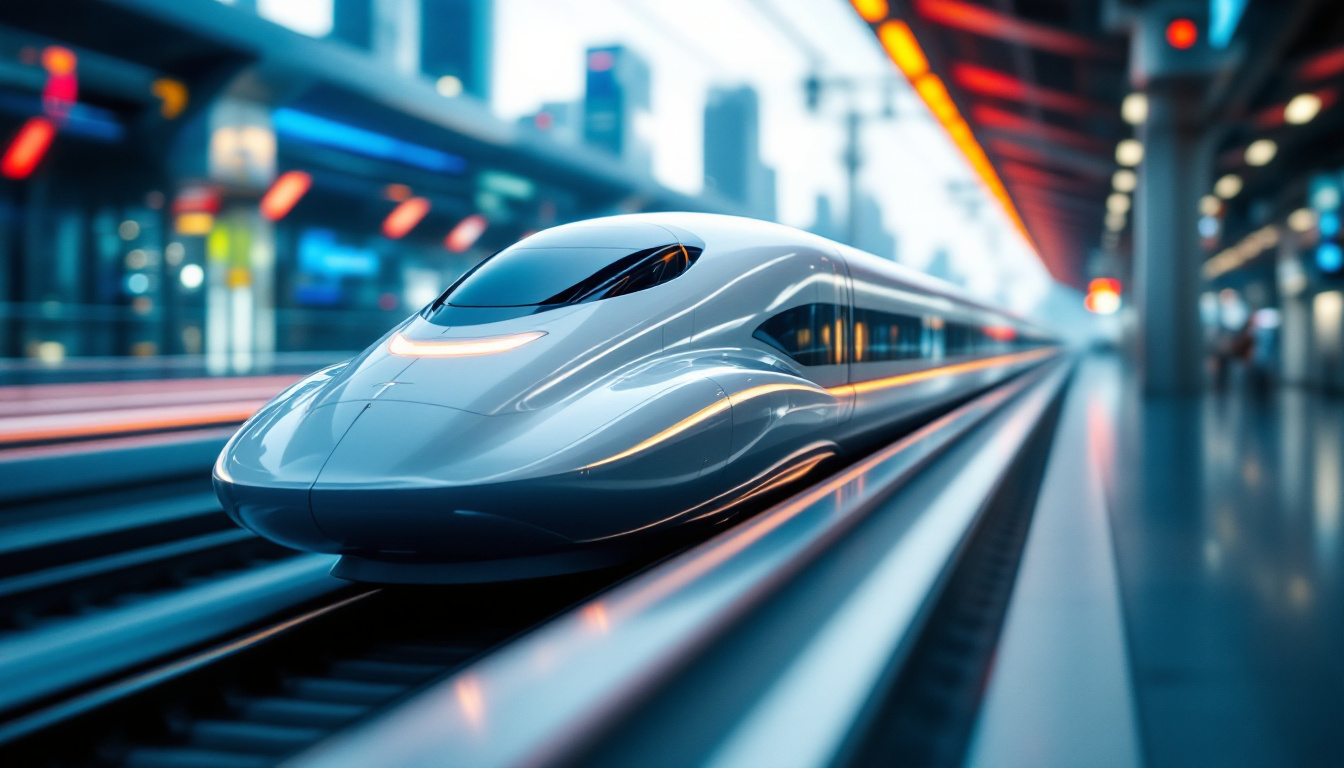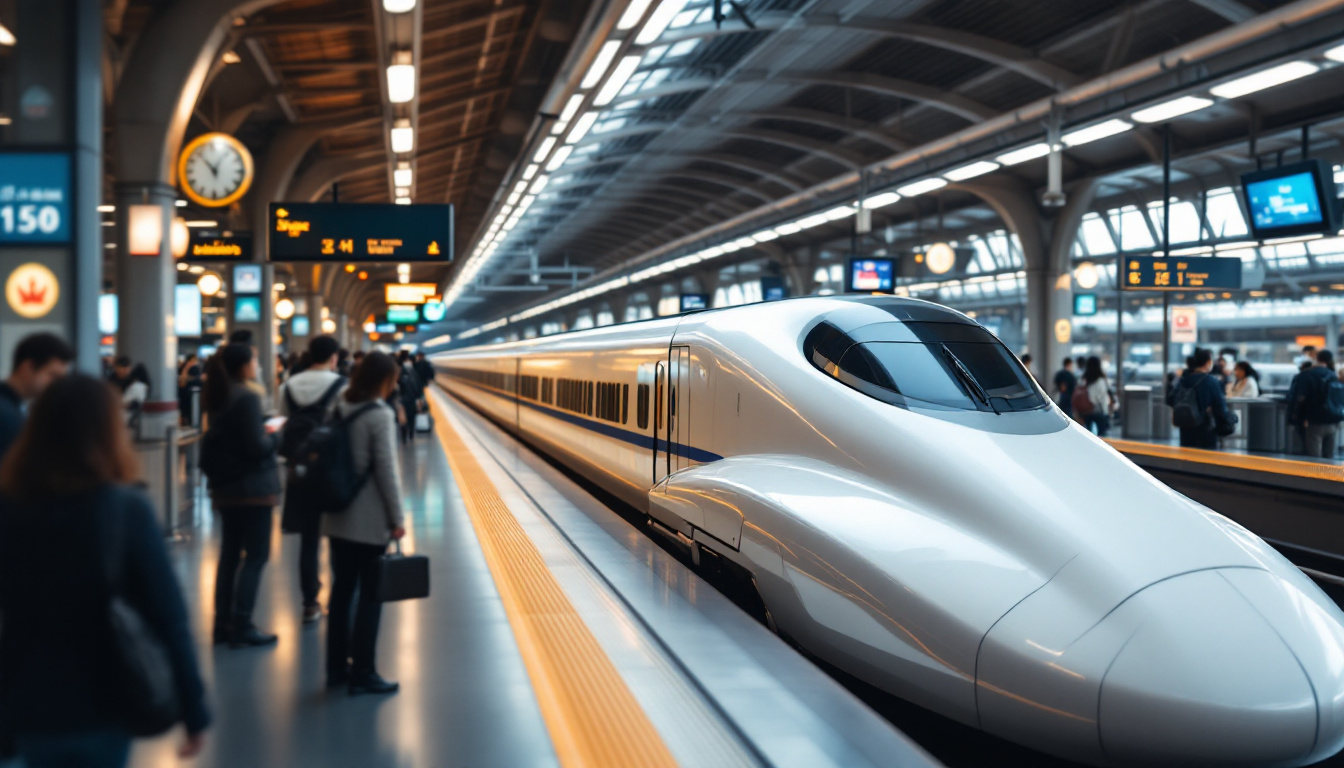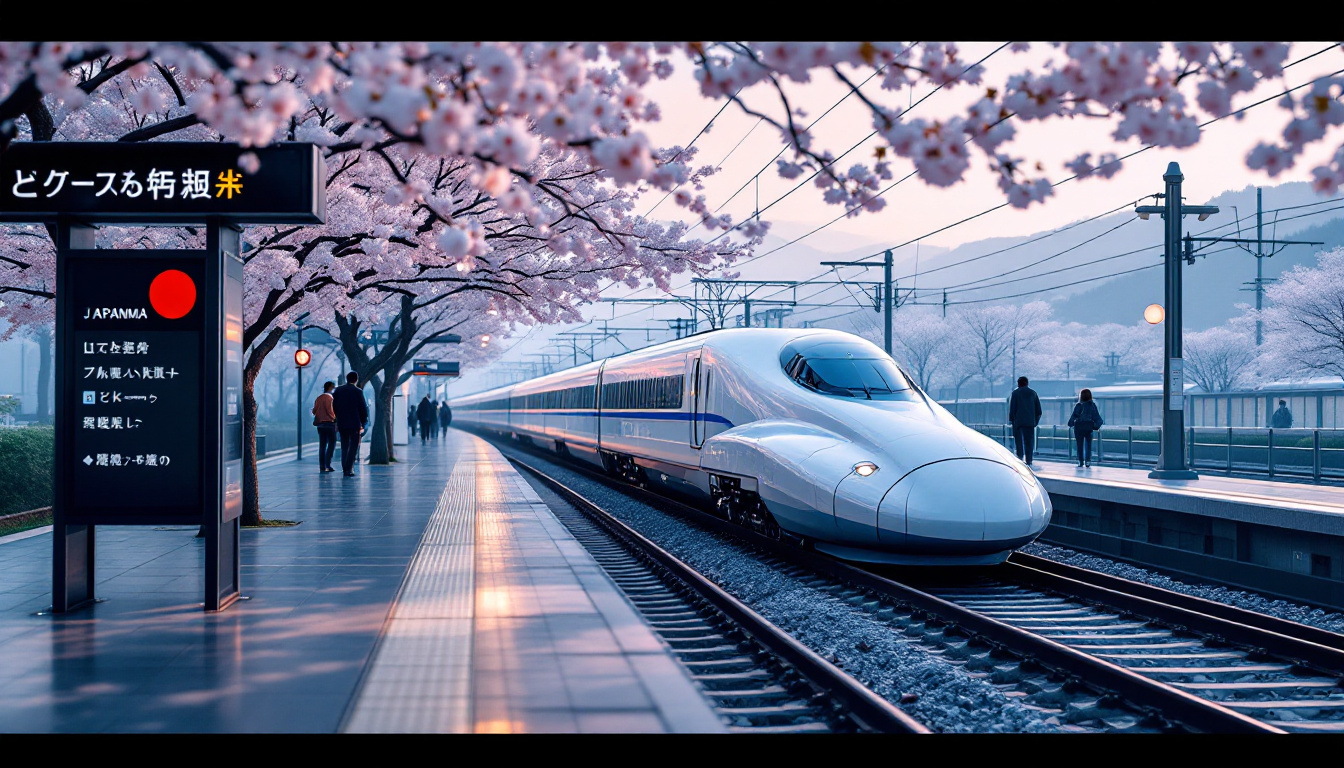The Shinkansen, also known as the “bullet train,” is a network of high-speed railway lines in Japan. It’s not just a mode of transportation, but a symbol of Japan’s post-war renaissance and technological prowess. This article will delve into the intricate details of this iconic Japanese marvel, providing a comprehensive understanding of its history, operations, and significance in Japanese culture and tourism.
Traveling in Japan is an experience that blends the old with the new, the traditional with the modern, and the Shinkansen is a perfect embodiment of this. It’s a journey that takes you through the heart of Japan, offering breathtaking views of the countryside, cities, and coastlines, all while you sit comfortably in a state-of-the-art train zipping at speeds of up to 320 km/h. Let’s embark on this journey to understand the Shinkansen better.
History of the Shinkansen
The history of the Shinkansen is a testament to Japan’s resilience and innovation. The idea of a high-speed rail network was first proposed in the early 1930s, but it wasn’t until after World War II that the plan was put into action. The first Shinkansen line, the Tōkaidō Shinkansen, opened in 1964, just in time for the Tokyo Olympics, symbolizing Japan’s recovery and growth after the devastation of the war.
Over the years, the Shinkansen network has expanded to cover most of the major cities across the Japanese archipelago, from Hokkaido in the north to Kyushu in the south. Today, it stands as a symbol of Japan’s technological prowess and commitment to efficient, eco-friendly transportation.
The Tōkaidō Shinkansen
The Tōkaidō Shinkansen, the first and most famous Shinkansen line, connects Tokyo and Osaka, Japan’s two largest metropolitan areas. It was a revolutionary development in its time, reducing the travel time between these two cities from six hours to just four. Today, with modern trains, the journey takes less than two and a half hours.
The Tōkaidō Shinkansen is not just a transportation line; it’s a cultural icon. It has been featured in numerous films, TV shows, and works of literature, and it’s a must-experience for any visitor to Japan. The views of Mount Fuji from the train are particularly famous and have become a symbol of the journey.
Expansion of the Network
Following the success of the Tōkaidō Shinkansen, the network was gradually expanded to cover more of the country. The Sanyo Shinkansen, which connects Osaka with Fukuoka in Kyushu, opened in 1975. The Tohoku Shinkansen, which extends north from Tokyo to Aomori, began operations in 1982. Today, the network includes several other lines, including the Hokkaido, Joetsu, and Hokuriku Shinkansen.
Each new line brought the Shinkansen’s high-speed, efficient service to more people and regions, contributing to economic growth and development. The expansion also brought about improvements in technology and service, with newer trains offering higher speeds and more amenities.
Technology and Design
The Shinkansen is renowned for its advanced technology and design. The trains are designed for speed, safety, and comfort, with features such as aerodynamic train noses, active suspension systems, and soundproofing. The tracks and infrastructure are also designed for high-speed travel, with features like large-radius curves and continuous welded rails.

The technology behind the Shinkansen is constantly evolving. Newer trains are equipped with features like regenerative braking, which recovers energy during braking, and advanced control systems for smoother and safer rides. The trains are also becoming more eco-friendly, with efforts to reduce energy consumption and emissions.
The Bullet Train Design
The distinctive “bullet” shape of the Shinkansen trains is not just for aesthetics; it’s a result of careful aerodynamic design. The long, pointed nose helps to reduce air resistance at high speeds, allowing the train to move more efficiently. It also helps to reduce the noise produced by the train, particularly when it passes through tunnels.
The interior of the trains is also designed for comfort and convenience. Seats are spacious and can be rotated to face the direction of travel or to create a private group seating area. There are also amenities like restrooms, vending machines, and power outlets for passengers’ convenience.
Track and Infrastructure Design
The Shinkansen tracks are designed specifically for high-speed travel. They are built with large-radius curves and gentle gradients to allow the trains to maintain high speeds. The tracks are also continuously welded, which reduces vibration and noise and provides a smoother ride.
The infrastructure of the Shinkansen network is also designed for efficiency and safety. Stations are equipped with platform screen doors to prevent accidents, and the tracks are separated from other rail lines to prevent collisions. There are also advanced control systems to monitor train movements and prevent accidents.
Operations and Services
The Shinkansen is known for its punctuality, reliability, and high level of service. Trains run at frequent intervals, often as often as every 10 minutes during peak times, and delays are extremely rare. The trains are also known for their cleanliness, with cleaning crews quickly and efficiently cleaning the trains at each terminus.

There are different types of Shinkansen services, offering different speeds and stopping patterns. The fastest services, like the Nozomi and Hayabusa, stop only at major stations and offer the quickest travel times. Slower services, like the Hikari and Kodama, stop at more stations and are often cheaper.
Punctuality and Reliability
The Shinkansen’s punctuality is legendary. The average delay on the Shinkansen network is less than one minute, including delays caused by natural disasters. This level of punctuality is achieved through meticulous maintenance, precise scheduling, and advanced control systems.
The reliability of the Shinkansen is also exceptional. Breakdowns and technical issues are extremely rare, thanks to rigorous maintenance and inspection procedures. The trains are designed for durability and reliability, with features like fault-tolerant systems and redundant components.
Services and Amenities
The Shinkansen offers a range of services and amenities to make the journey comfortable and enjoyable. All trains have reserved seating, with spacious seats and plenty of legroom. There are also amenities like restrooms, vending machines, and power outlets. On some trains, there are also food and beverage services, with attendants selling bento boxes, snacks, and drinks.
For an even more luxurious experience, some Shinkansen services offer first-class “Green Car” seats. These seats are more spacious and comfortable, and they come with extra amenities like reading lights and personal power outlets. Some trains also offer “Gran Class” seats, which are even more luxurious and come with full meal service.
Impact on Japan
The Shinkansen has had a profound impact on Japan, transforming the country’s transportation landscape and contributing to its economic and social development. It has brought regions closer together, boosted tourism, and promoted regional development. It has also set a standard for high-speed rail travel worldwide.
Furthermore, the Shinkansen has become a symbol of Japan’s technological prowess and innovative spirit. It’s a source of national pride and a testament to the country’s ability to overcome challenges and achieve great things.
Economic and Social Impact
The Shinkansen has contributed significantly to Japan’s economic growth and social development. By reducing travel times between cities, it has made it easier for people to commute to work or school, boosting economic activity and promoting regional development. It has also boosted tourism, making it easier for visitors to explore the country.
The Shinkansen has also had social impacts. It has brought regions closer together, promoting cultural exchange and understanding. It has also changed people’s perceptions of distance, making the country seem smaller and more connected.
Environmental Impact
The Shinkansen is also an environmentally friendly mode of transportation. It consumes less energy and emits less CO2 per passenger-kilometer than cars or airplanes. It also helps to reduce traffic congestion and air pollution in cities. The Shinkansen’s commitment to environmental sustainability is reflected in its ongoing efforts to reduce energy consumption and emissions.
Furthermore, the Shinkansen has inspired other countries to develop their own high-speed rail networks, spreading the benefits of this eco-friendly mode of transportation around the world.
Traveling on the Shinkansen
Traveling on the Shinkansen is a unique experience that combines speed, comfort, and convenience. Whether you’re a tourist exploring Japan or a local commuting to work, the Shinkansen offers a fast, reliable, and enjoyable way to travel.
There are a few things to keep in mind when traveling on the Shinkansen. Tickets can be purchased at stations, online, or through travel agencies. It’s also important to be on time, as the trains depart promptly and don’t wait for late passengers. And remember to enjoy the journey, whether it’s the breathtaking views of Mount Fuji, the comfortable ride, or the bento box you bought on board.
Buying Tickets
There are several ways to buy Shinkansen tickets. You can buy them at ticket machines or ticket counters at stations, online through the JR East or JR West websites, or through travel agencies. Tickets can be purchased in advance or on the day of travel, but it’s recommended to buy them in advance, especially during busy periods.
When buying a ticket, you’ll need to choose your train service, departure time, and seat type. You can choose between reserved and non-reserved seats, and between ordinary and Green Car seats. If you’re planning to travel a lot on the Shinkansen, consider getting a Japan Rail Pass, which offers unlimited travel on most Shinkansen trains for a fixed period.
On Board the Train
Once on board the Shinkansen, you can sit back and enjoy the ride. The seats are comfortable and spacious, with plenty of legroom and reclining seats. There are also amenities like restrooms, vending machines, and power outlets. On some trains, there are also food and beverage services.
Remember to keep your ticket with you at all times, as you’ll need it to exit the station at your destination. Also, keep in mind that the Shinkansen is a quiet zone, so keep your voice down and avoid making phone calls. And don’t forget to enjoy the views, especially if you’re traveling on the Tōkaidō Shinkansen and have a chance to see Mount Fuji.
Conclusion
The Shinkansen is more than just a train; it’s a symbol of Japan’s resilience, innovation, and commitment to quality. It’s a testament to the country’s ability to overcome challenges and achieve great things. Whether you’re a tourist exploring Japan or a local commuting to work, the Shinkansen offers a fast, reliable, and enjoyable way to travel.

So next time you’re in Japan, why not take a ride on the Shinkansen? It’s not just a way to get from A to B; it’s an experience in itself. From the breathtaking views of Mount Fuji to the comfortable ride and the bento box you bought on board, it’s a journey you won’t forget.
Ready to embark on your own high-speed adventure across Japan? Let Travel2Borders take the reins of your travel planning. Our expertise in crafting personalized itineraries means you can enjoy the Shinkansen experience without the hassle of managing bookings and reservations. Plus, we’ll secure better rates on hotels and flights, ensuring your journey is as cost-effective as it is memorable. Book your next trip with us and step aboard the Shinkansen for an unforgettable voyage through the heart of Japan.

